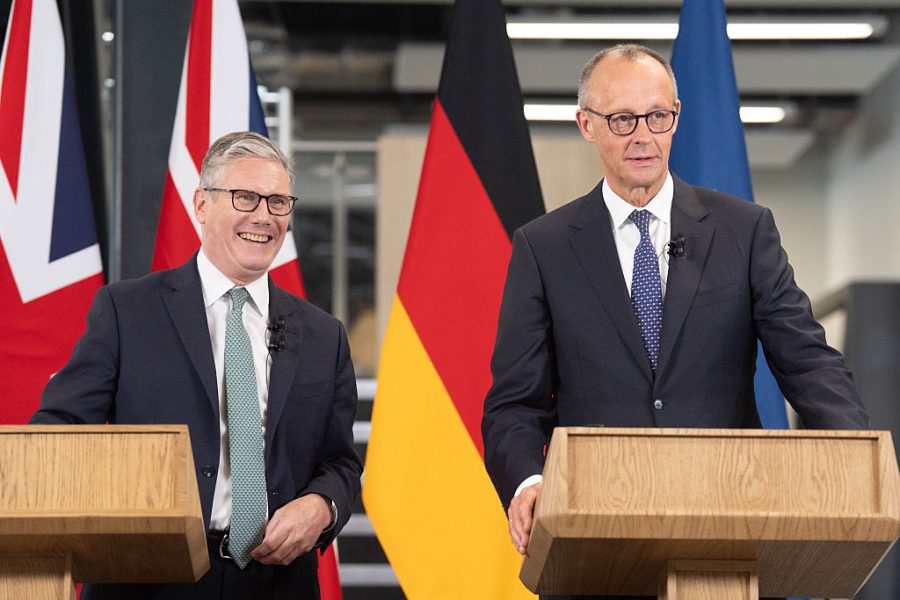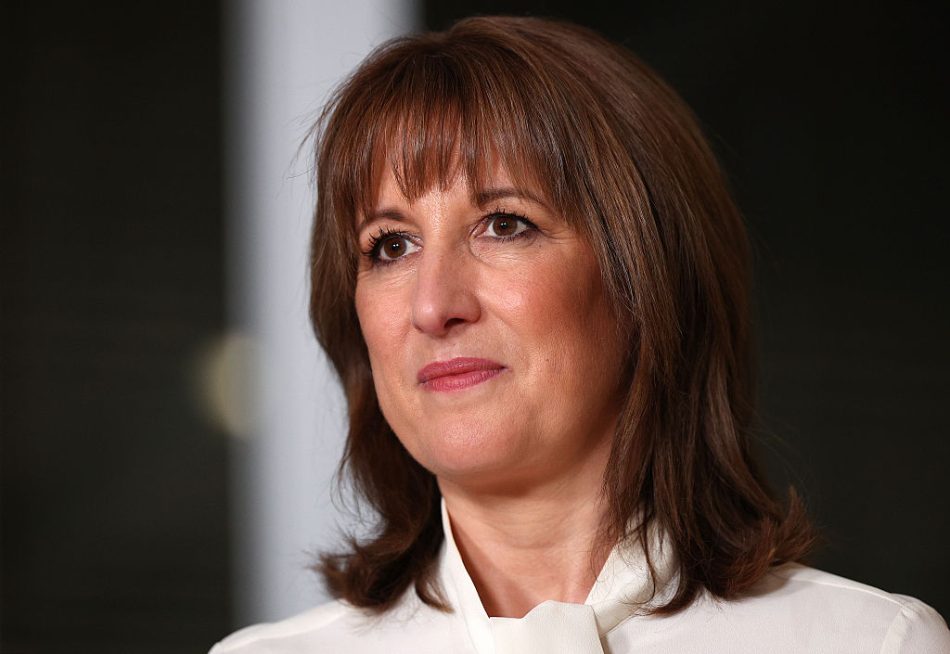Yesterday the German Chancellor Friedrich Merz visited London for the first time since he took office in May. He and the prime minister have met on a number of occasions, and although the two lawyers are different characters – Sir Keir Starmer, the stiff, soi disant progressive human rights barrister; Merz, the abrasive, hard-nosed corporate counsel – they have forged a functional relationship. But this was Merz on Starmer’s home ground.
The government has put a great deal of effort into bespoke bilateral relationships. Defence secretary John Healey and the German defence minister Boris Pistorius signed the Trinity House Agreement last October, and there have also been various kinds of arrangements put in place with Estonia, Ukraine, Norway, Qatar and France, as well as the outline of a trade agreement with the United States. This week, Starmer built on the Trinity House Agreement to agree to a treaty with Germany on friendship and bilateral cooperation; this has been dubbed, as if Downing Street were sweeping a Monopoly board, the ‘Kensington Treaty’.
Starmer and his government must make sure that we keep pace with our allies
It is the first bilateral treaty the UK and Germany have concluded since the second world war, and it covers a broad range of policy areas: diplomacy, security and development, defence cooperation, internal security, justice and migration, economic growth, resilience and competitiveness, open and resilient societies, and climate, energy, nature, environment and agriculture. Given the current geopolitical situation, the defence provisions have received particular attention, and it is worth trying to unpick the details.
I’ve been to enough international assemblies to recognise the florid, padded language of diplomacy, but it is fair to say that the Kensington Treaty would have benefited from a good but firm editor. It adds very little to the sum of human knowledge or happiness to declare that the UK and Germany are ‘inspired by a common will to address the momentous new challenges to Euro-Atlantic security’ or that they are ‘reaffirming their ironclad commitment to the Transatlantic Alliance as the bedrock of their security, based on shared values’.
Peeling away the ambient verbiage, however, there are some concrete measures. Both parties will improve their ‘military interoperability, interchangeability and integration’, meaning that they will be more closely aligned in equipment, doctrine and methodology; these are important considerations when contemplating fighting as part of a multinational coalition.
There is also a commitment to closer industrial cooperation, again partly reflecting the fact that many of our most significant military platforms are now multinational: Eurofighter Typhoon, the F-35 Lightning, the Airbus Voyager tanker aircraft and A400M transports, the Boxer and Ajax armoured fighting vehicles, the RCH 155 self-propelled howitzer, the New Medium Helicopter programme. Britain and Germany will also continue jointly to develop a new deep precision strike missile and work on uncrewed aerial systems.
It is interesting that the treaty also contains a provision for the UK and Germany to work more closely on defence exports through the UK-Germany Defence Industry Forum. Under the treaty, the UK will join Germany, France and Spain in the agreement on defence export controls first established in September 2021, which will align the export control regimes of all four countries.
With this in place, the UK and Germany can undertake shared procurement and export promotion in the hope of increasing sales of platforms like the Typhoon, the A400M and Boxer while also making efficiency savings through streamlining sales processes. There may be new customers for the Typhoon in the Middle East and Asia, which could be critical for UK industry; BAE Systems Warton recently completed the last Typhoon on its order books, and there is a danger of loss of skills and capability if new buyers are not found.
For the UK, Germany may be a very useful ally in these areas at the moment. While the government in London has still not set out any robust targets for increasing defence spending to 5 per cent of GDP by 2035, a target agreed at the Nato summit in the Hague last month, Germany is going all in. Berlin will borrow €400 billion (£347 billion) over the next five years, in which time it intends to spend €649 billion (£563 billion) overall on defence, reaching 3.5 per cent of GDP on core military expenditure by 2029.
Currently, the UK cannot dream of matching that largesse. The current defence budget is 2.6 per cent of GDP if the intelligence agencies are included and will still not reach £80 billion a year by 2027/28. Ministers cannot even give any certainty or timeframe for reaching three per cent of GDP.
Perhaps a rising tide really does lift all boats. If the UK can partner with the free-spending Germans to sell more military equipment built wholly or partially in Britain, that can only be good. Nevertheless, with the Kensington Treaty now in place, Starmer and his government must make sure that we keep pace with our allies and do not find ourselves financially embarrassed. A great deal of talk has been talked on defence: now we need to look very closely at the walking.








Comments